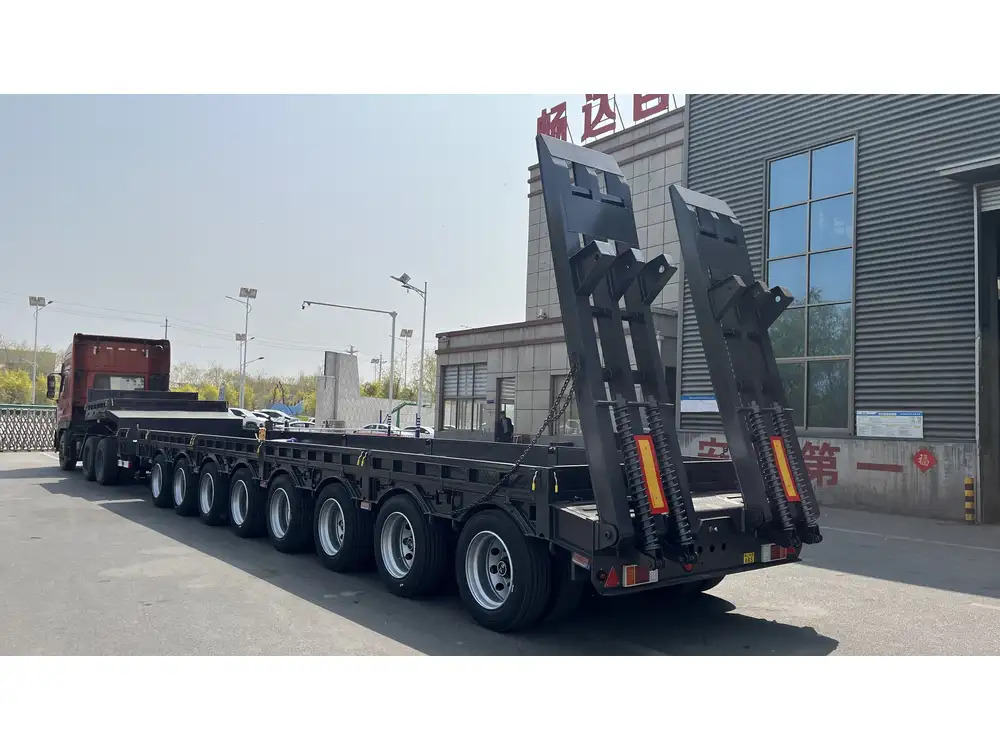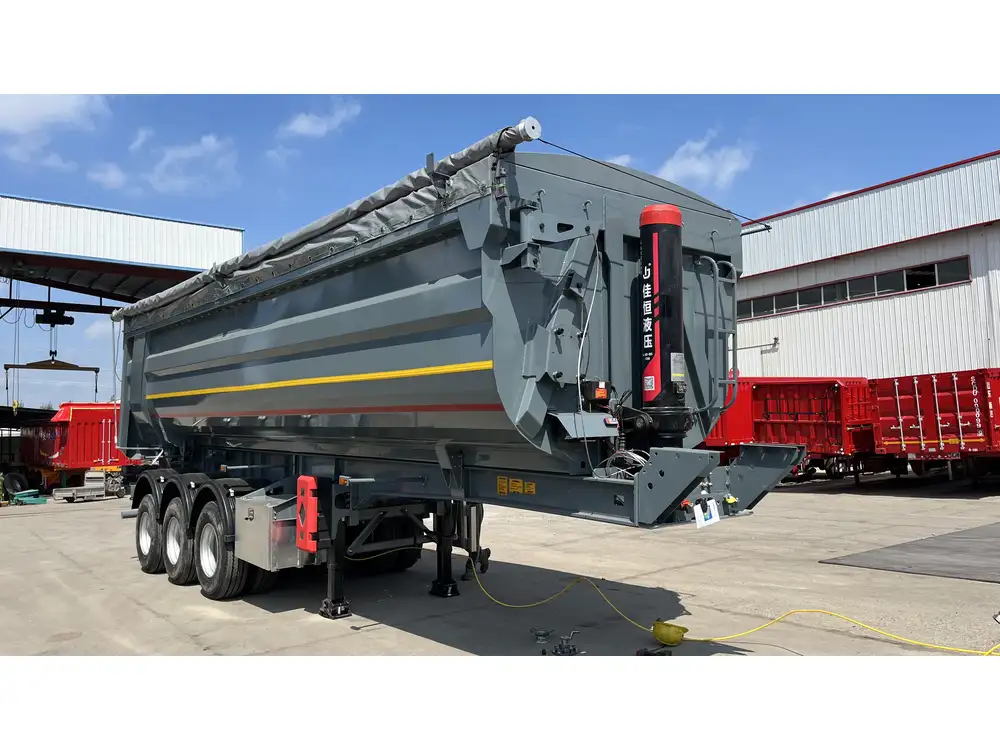Introduction to Air Tanks: Functionality and Importance
In the world of transportation, particularly in the manufacturing and logistics sector, trailers serve a critical role in the movement of goods. Among these, the 53-foot trailer stands out due to its versatility and capacity. A vital component often integrated into these trailers is the air tank. While many operators and fleet managers are familiar with the term, the specific role of an air tank on a 53-foot trailer necessitates a deeper examination.
An air tank, also referred to as an air reservoir, is primarily designed to store compressed air used in various operational functionalities of the trailer. Understanding its multifaceted roles not only enhances safety and efficiency but also aids in overall maintenance practices.
Table of Contents
- What is an Air Tank?
- Key Functions of Air Tanks
- Types of Air Tanks
- Maintenance and Troubleshooting
- Conclusion

What is an Air Tank?
An air tank in the context of a 53-foot trailer is a storage vessel that holds compressed air. Generally made from steel or aluminum, these tanks can withstand high-pressure environments, which is essential for their functionality. They are equipped with various fittings to connect to the trailer’s air systems and may also include pressure relief valves to ensure safety during operation.
The air tank’s primary capacity is to act as a reservoir, providing the necessary air pressure whenever required. This pressure is essential for actuating various devices on the trailer and enhancing operational reliability.
Key Functions of Air Tanks
Understanding the core functions of air tanks used in 53-foot trailers reveals their importance in ensuring that operations run smoothly and safely.
Braking System Efficiency
One of the most critical functions of an air tank is its role in the braking system. The braking system on a trailer, particularly the 53-foot variant, predominantly relies on compressed air to function. The process can be elaborated as follows:
- Compressed Air Reservoir: The air tank stores compressed air generated by the truck’s compressor.
- Brake Actuation: When the driver engages the brakes, this stored air is released, enabling the braking mechanism to function. This heavy reliance on air pressure implies that any deficiency in this system could lead to significant braking issues, underscoring the air tank’s importance.

Suspension Support
In addition to braking, the air tank ensures that the trailer’s air suspension system operates effectively. Air suspension systems utilize compressed air to adjust ride height and load distribution, which is vital for maintaining stability and comfort during transport.
- Load-Leveling: The air tank provides necessary air pressure that helps the suspension adapt to varying loads, stabilizing the trailer regardless of cargo weight.
- Ride Quality: Enhanced ride quality for both driver and cargo is achieved; improper functioning can result in excessive wear on both the trailer and the cargo, increasing maintenance costs.
Pneumatic Tools and Accessories
Beyond its primary roles in braking and suspension, the air tank on a 53-foot trailer can also power pneumatic tools and accessories. This is particularly advantageous in loading and unloading scenarios.
- Powering Equipment: Tools such as air jacks, impact wrenches, or air-operated lifts can be operated using the air stored in the tank.
- Efficiency Increase: Leveraging pneumatic tools boosts operational efficiency, as these tools are often faster and require less physical effort compared to manual options.
Types of Air Tanks
A nuanced understanding of the types of air tanks available will help operators make informed choices based on their specific needs.

Single vs. Dual Air Tanks
Air tanks can come in configurations that significantly influence their efficiency and capacity.
Single Air Tanks: This setup is simpler and lighter, making it a suitable option for smaller operations or when weight savings are crucial. However, the drawback is the limited air storage it provides, which could lead to pressure drops in high-demand scenarios.
Dual Air Tanks: This design enhances the overall efficiency by providing a backup supply of air. If one tank fails or runs low, the second can compensate, ensuring consistent performance, especially under heavy loads or in complex operational environments.
Material Considerations
Air tanks can be constructed from various materials, each impacting their performance, weight, and durability.
Steel Tanks: Known for their strength and durability, steel tanks withstand significant pressure but can rust over time, necessitating regular maintenance to ensure longevity.
Aluminum Tanks: Lightweight and resistant to corrosion, aluminum air tanks are ideal in applications where weight is a critical factor. However, they may be more susceptible to damage from heavy impacts.
Maintenance and Troubleshooting
To ensure that air tanks function correctly, regular maintenance is essential. Awareness of common issues and adopting proper maintenance practices can extend the lifespan of air tanks.

Common Issues
Various complications can arise if air tanks are not properly maintained. Here are some prevalent issues:
- Air Leaks: Over time, seals and fittings may degrade, causing air leaks which reduce efficacy. Regular inspection of hoses and fittings is vital in identifying such concerns.
- Contaminated Air Supply: Debris and moisture can enter the tank, leading to corrosion and compromised performance. Filters should be checked frequently to prevent contamination.
- Pressure Imbalance: A malfunction in the compressor or the air tank may lead to uneven pressure distribution, potentially impairing braking or suspension systems.
Regular Maintenance Tips
Implementing routine checks will mitigate many of the risks associated with air tanks:
- Visual Inspections: Conduct regular visual assessments for signs of leaks, corrosion, or structural damage.
- Pressure Monitoring: Utilize gauges to continually monitor pressure levels, ensuring that the air tank maintains optimal performance.
- Draining Moisture: It is crucial to drain moisture from the tank regularly to avoid contamination; this is often a simple task but can have significant impacts on the tank’s lifespan.
Conclusion
The integration of air tanks into 53-foot trailers is not merely an operational choice but a necessity for enhancing safety, efficiency, and reliability. By storing compressed air, these tanks facilitate core functionalities such as effective braking, suspension adjustment, and powering pneumatic tools, ultimately resulting in smoother transportation of goods.
By understanding the types of air tanks available and prioritizing regular maintenance, trailer operators can ensure their equipment operates optimally over time. As such, comprehensive knowledge about air tanks will enable manufacturers, fleet managers, and operators alike to make informed choices, fostering a culture of safety and efficiency within the logistics sector.
In an industry where every component has its critical role, the air tank—often overlooked—stands as a cornerstone of performance. Its significance in the hierarchy of trailer functionality cannot be overstated, making it an element of paramount importance that warrants understanding and respect.



